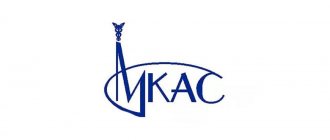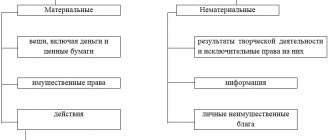Any entrepreneur or head of an organization strives to ensure that his products are of appropriate quality. But it is impossible to completely insure against defects, and at any stage of production, there are many reasons for this. Monetary losses incurred as a result of the release of defective products must be accounted for. Let's look at how to correctly enter in accounting the amounts associated with the results of defects in production.
Question: The purchasing organization using the simplified tax system, when transferring previously purchased raw materials from the warehouse to the main production, discovered a defect, returned the defective raw materials to the supplier, and the supplier returned the money paid to him. How to reflect these transactions in the organization's accounting? The cost of raw materials amounted to 60,000 rubles, including VAT of 10,000 rubles. View answer
Postings
Production defects are recorded on the account. 28. All expenses for detected defects before sending for sale and after sale are collected in the debit of the account. The loan reflects the amounts that will have to be paid by those responsible for the manufacturing defect. As a rule, deductions from earnings, deprivation of bonuses, other penalties and deductions, and other amounts attributed to the reduction of losses are carried out. The latter, in particular, includes the cost of low-quality products at the price of their possible use.
By compiling credit and debit turnover, the accountant determines the total amount of losses. Write-off of production defects is carried out at its cost from the account. 28 per count 20. Losses include the cost of quality products of the corresponding type. Analytical accounting is carried out for individual divisions of the enterprise, cost items, types of goods, circumstances of the defect, as well as persons involved in this.
Results
There are several types of marriage. Depending on its classification, the rules for including losses from defects in the cost of production vary. Accounting for defects in an enterprise is important for detecting the causes of defects, analyzing and tracking changes in losses from defects, as well as for improving the quality of manufactured products.
Read about the tax nuances of returning defective products in the material “The buyer returned a defective product.
How to reflect the refund in the seller’s tax accounting? You can find more complete information on the topic in ConsultantPlus. Free trial access to the system for 2 days.
Correctable defects
If they are identified, the cost of the defect is written off from the account. 20 and 43 are not produced. According to the account 28 in this case reflect only the costs associated with eliminating defects. These include:
- The cost of additional raw materials, materials used in the process of eliminating deficiencies.
- Salaries of workers who corrected defects. The accrual is carried out with appropriate mandatory deductions.
- Depreciation of equipment used in the process of eliminating defects.
The costs also include indirect costs of the workshop in which production defects are corrected. When distributing costs between different types of products manufactured in it and remade goods, the account is closed. 25. If there is an external removable manufacturing defect (identified by the consumer), transportation costs will also be included in the cost of correction. These are the costs of delivering low-quality goods from the buyer to the enterprise, to a specific workshop where the rework will be carried out, as well as the return transportation of corrected material assets.
Types and types of marriage
Marriage is divided into different types (depending on the place where it was detected) and types (depending on the possibility of its correction).
Based on the place of origin, there are two types of marriage:
- internal - product defects identified at the enterprise before they are sent to customers. Typically, such defects are discovered by the quality control service at the enterprise;
- external – product defects identified by the buyer (consumer). Such a defect can be detected immediately upon receipt of the goods or during its assembly, installation or operation. The manufacturing company reflects such a defect on account 24 only if the defective products are presented to it for correction or compensation for damage. If the defective products are not presented by the buyer (consumer), the defect is considered undetected and is not reflected on account 24.
The enterprise evaluates both internal and external defects from the perspective of how serious the identified deviations from the norms (standards) of the finished product are and whether they can be corrected. Accordingly, these types of marriage can be of two types:
- Correctable defects are products, parts, semi-finished products, units and work that, after eliminating the defects, can be used for their intended purpose and the correction of which is technically possible and economically feasible. For example, replacing a defective part in the supplied equipment, device, car, etc.;
- irreparable (final) defects are products, parts, semi-finished products, units and works that cannot be used for their intended purpose and the correction of which is technically impossible and economically impractical. For example, defective material when sewing clothes, the use of a different type of metal in the manufacture of the device body, defective food packaging, products spoiled due to the use of low-quality raw materials, etc.
Let's take a closer look at the types of marriage.
Internal marriage
Internal marriage can be:
- technically inevitable - this is a defect within the limits established by the technical documentation of the equipment or technological documentation for this type of product. That is, these losses do not depend on the actions of the enterprise and are considered objective. Based on standards for the production of finished products (GOST, TU, etc.), the enterprise has the right to independently calculate and establish in the order of the manager the norms for technically inevitable defects;
- unforeseen - this is a defect in excess of established technical (technological) standards. Its causes may be: unprofessional, accidental actions of workers due to inattention or deliberate actions, equipment failures, supply of low-quality raw materials, etc. It is impossible to plan such losses in advance, since there are subjective reasons that the enterprise could influence, but did not take in a timely manner or has not fully taken the necessary measures to prevent the occurrence of such defects. For example, insufficiently qualified workers were allowed into production, the quality of raw materials was not carefully checked, maintenance or repair of equipment was not carried out in a timely manner, etc.
What documents are used to formalize a marriage?
For whatever reason, internal defects arise, defective products must be capitalized. There are no special or standard forms of primary documents for registration of receipt, revision and write-off of defects.
An enterprise can draw up a report on the detected defect (notification of defect, defect report). It is acceptable to maintain statements, registers, and marriage books. In any case, in the primary document to identify internal defects, we recommend recording:
- place where the defect was detected (workshop, warehouse, depot, construction site No. XX, etc.);
- name of the finished product, semi-finished product, the production of which was found to be defective;
- description of defects, deviations from standards that confirm the defect. It is worth developing and approving an internal classifier of conformity between the types of products manufactured and technological operations for the production of each type of product, during the implementation of which technological defects and/or technological losses may occur. Using such a classifier, it is convenient to code the identified defect for its further movement (for processing, for correction, sale, final write-off);
- reasons for the defect (technological, unexpected (alleged reasons));
- volume of defects (kg, pcs., m);
- the accounting price of the defect (may not be indicated if it is taxed by the accounting department);
- signatures of the persons who drew up the act.
Next, the movement of defective products is documented as a normal movement of goods and materials:
- posting of defects in the warehouse, as well as corrected defects. Based on the production report, a receipt order of standard form No. M-4 is drawn up, approved by Order of the Ministry of Statistics dated June 21, 1996 No. 193 (hereinafter referred to as Order No. 193);
- transfer of defects for processing - on the basis of a limit-receipt card (standard form No. M-8), invoice-requirement for the release (internal movement) of materials (standard form No. M-11). These forms are also approved by Order No. 193.
Accounting. The cost of identified internal defects and the costs of correcting them is reflected in the debit of account 24 (Instruction No. 291). Analytical accounting for this account is carried out by type of production and is similar in use to account 23.
The cost of an internal correctable defect is accumulated in the debit of account 24 and consists of the costs of its correction, including:
- the cost of raw materials, materials and components used to eliminate defects;
- labor costs and unified social contributions;
- part of the costs of maintaining and operating equipment and general production expenses (hereinafter referred to as OPR).
After correcting the defect, accumulated expenses from account 24 are written off back to the debit of account 23.
| Important! When calculating the cost of production, expenses for defects must be indicated as a separate item “Costs from defects” and cannot be attributed to other items (raw materials, wages, ODA, etc.). This item includes the cost of ultimately rejected products and the cost of correcting defective defects. Expenses under this item may be reduced by the fair value of the final defect if it can be sold. |
The cost of internal irreparable (final) defects upon capitalization consists of direct costs (cost of raw materials, wages, unified social contributions) and part of the costs of operating equipment and pilot projects. All these expenses are written off to the debit of account 24 according to the expense norms of the corresponding items.
Next, the irreparable marriage is written off :
- included in the production cost of products (Dt 23 ), as other direct costs (clause 14 P(S)BU 16), for the type of product for which there was a defect. To avoid overestimating the production cost of finished products, it includes only losses from technically inevitable defects;
- for expenses for unexpected defects (as excess losses), which are not included in the production cost of a particular type of product, but are written off as other expenses in accordance with the accounting policy of the enterprise (Dt 91 “Overhead production expenses” or 947 “Shortages and losses from damage to valuables”).
If defective products can be sold externally as raw materials or semi-finished products, then the costs of defects are reduced by the fair value of such inventories with their simultaneous capitalization (Dt 209 - Kt 24 ), which is provided for by Instruction No. 291 (explanations to accounts 24 and 20), clause 14 P(S)BU 16. For example, defective bakery products can be sold as livestock feed, and defective textile products can be sold as rags or altered into other products.
If the irreparable defect is planned to be used as raw materials and semi-finished products at the enterprise, then the initial cost of such inventories is determined by the cost of their possible use (Dt 209, 25 - Kt 24) (clause 2.13 of Method Recommendations No. 2). For example, candies with damaged packaging can serve as a substitute for raw materials (sugar).
Expenses for internal defects are reflected (written off) in the month of its detection.
If the defect was caused by the supplier of raw materials, the company can submit a claim to him for reimbursement of the costs of the defect, if this type of liability of the supplier is provided for in the contract. Typically, such claims are made for irreparable defects at the level of the cost of raw materials, materials included in the cost of defects, plus VAT. These operations require the preparation of additional documents, possibly with the participation of representatives of suppliers.
Income tax. As of today, no adjustments to the object of taxation of income tax for the amount of losses from marriage (damage to valuables) are provided for by the Tax Code (INK State Tax Service dated 02/28/20 No. 851/6/99-00-07-02-02-06/IPK (hereinafter - INK No. 851), State Fiscal Service dated 08.08.19 No. 3687/6/99-99-15-02-02-15/IPK).
VAT. It all depends on what happens to the defective products:
- if it is sold or the costs of correcting the defect are included in the cost of finished products to be sold in the course of taxable transactions, then the VAT payer does not accrue any additional tax liabilities. Everything is “covered” by tax obligations when selling finished products, the cost of which includes the costs of defects (INK No. 851, State Fiscal Service dated May 10, 2019 No. 2064/6/99-99-15-03-02-15/IPK );
- if the irreparable defect is not included in the cost of the finished product and is not “covered” by the sales price of the product, it will be necessary to accrue contingent tax liabilities for VAT, since in this case it is quite problematic to prove the connection of the expenses incurred with the business activities of the enterprise (basis - paragraph “d” clause 198.5 of the Tax Code). Then, no later than the last day of the reporting month in which the defect was written off, you will have to issue a consolidated tax invoice (hereinafter referred to as TN) with the type of reason “not issued to the buyer - 13” and register it in the URTI within 20 calendar days following the day of its issue ( clause 201.10 of the Tax Code). The base for calculating VAT will be the cost of raw materials (services) purchased with VAT as part of the cost of defects (clause 189.1 of the Tax Code);
- if low-quality raw materials supplied by the supplier (for example, milk) are identified, and the supplier delivers a new batch as a replacement without picking up the previous one, then the buyer must write off the cost of the first supply of raw materials as expenses and accrue contingent tax liabilities on it also on the basis of paragraphs. “g” clause 198.5 of the Tax Code (INK State Tax Service dated November 20, 2019, No. 1438/6/99-00-07-03-02-15/IPK);
- if the supplier compensates the buyer for losses for low-quality (defective) goods, then the buyer is obliged to write out a tax document for the amount of such compensation, as for the supply of goods based on the tax base, but not lower than the purchase price (clause 188.1 of the Tax Code). For example, in the event of loss of goods during transportation with subsequent compensation for damage by the carrier (INK State Tax Service dated 02.19.19 No. 611/6/99-99-15-03-02-15/IPK, State Fiscal Service dated 05.16.18 No. 2193 /6/99-99-15-03-02-15/IPK, State Fiscal Service dated 07/12/19 No. 3250/6/99-99-15-03-02-15/IPK, State Fiscal Service dated 12/05/18 No. 5111/6/99-95-42-03-15/IPK).
Example 1
LLC "August" produces textile products. The following was detected at the enterprise:
- irreparable defect for a total amount of 10,000 UAH. Of these, UAH 6,000 can be sold as a flap at fair value (excluding VAT), acceptable defects for technological reasons are UAH 1,000;
- irreparable defect due to poor quality raw materials from the supplier. The cost of raw materials excluding VAT is UAH 75,000. A claim for damages has been submitted to the supplier;
- correctable defect (packaging is broken, repackaging is possible). The cost of modification is 3,000 UAH.
These transactions are reflected in accounting as follows:
(UAH)
| No. | Contents of operation | Source documents | Accounting | ||
| Dt | CT | Sum | |||
| 1 | 2 | 3 | 4 | 5 | 6 |
| An irreparable marriage | |||||
| 1 | An irreparable marriage has been identified | Marriage Act | 24 | 23 | 10 000 |
| 2 | Inventories have been capitalized (scraps) that can be sold externally (at the price of possible sales, excluding VAT) | Receipt order standard form No. M-4 | 209 | 24 | 6 000 |
| 3 | Losses from defects written off as production expenses: – within the limits of technological defects | Accounting information | 23 | 24 | 1 000 |
| – above the norms of technological defects (10,000 – 6,000 – 1,000) | 947 | 3 000 | |||
| 4 | Contingent tax liabilities for VAT have been accrued for the cost of irreparable defects in excess of technological standards (3,000 x 20%) | NN | 949 | 641 | 600 |
| 5 | An irreparable unexpected defect was discovered due to the fault of the raw material supplier | Marriage Act | 24 | 23 | 50 000 |
| 6 | A claim for damages has been submitted to the supplier | Claim | 374 | 24 | 75 000 |
| 7 | Tax liabilities for VAT have been accrued in accordance with clause 188.1 of the Tax Code | NN | 374 | 6412 | 15 000 |
| 8 | Claim payment received | Bank statement | 311 | 374 | 90 000 |
| A fixable marriage | |||||
| 9 | Work was carried out to repack the correctable defect | Production report, limit cards, payroll sheet | 24 | 20, 66, 65, 91 | 3 000 |
| 10 | The costs of correcting defects are written off as production expenses. | Accounting information | 23 | 24 | 3 000 |
External marriage
External defects are identified by buyers (consumers) of the enterprise's products. If the contract or law provides for the obligations of the supplier (manufacturer) to correct or compensate for defects identified by the buyer, then the seller (manufacturer) is obliged to take such defects into account in the month the buyer submits the claim.
The cost of external defects includes:
- the cost of products that are ultimately rejected by the buyer. This cost is reduced by the fair value of defective products that are still usable;
- the amount of compensation to the buyer for the costs of purchasing defective products (costs of delivery of the product by the buyer, its installation - if there are such costs);
- costs for dismantling rejected products;
- transportation costs for replacing defective products to the buyer;
- expenses for correcting defective products from the buyer, if the defect is correctable.
The enterprise can write off all of these expenses either at the expense of the guarantee collateral (reserve), which is reflected in subaccount 473 “Providing guarantee obligations”, or to account 24.
After the buyer’s claims are satisfied, the expenses accumulated on account 24 are written off depending on what actions the company plans and can take with such defects:
- if the defect is correctable, they do the same as with internal defects (they modify the product and sell it again);
- if the marriage is irreparable, the expenses for the marriage are written off as expenses of the period;
- if defective products can be sold or used as raw materials, semi-finished products, the cost of defects is reduced by the fair value of such inventories (upon sale) and the cost of possible use (when used in own production).
Example 2
Sofa LLC received a claim from the buyer that the furniture set supplied to him was defective. The selling price of furniture is 24,000 UAH (including VAT – 4,000 UAH), cost price – 18,000 UAH. Additionally, the buyer requested reimbursement of the cost of delivery of equipment paid to a third party (UAH 1,000, excluding VAT).
The furniture has a repairable defect, the cost of modification was 3,500 UAH. The goods were sold to another buyer at a reduced price (14,000 UAH, in addition to VAT - 2,800 UAH).
No warranty provision was created.
These transactions are recorded as follows:
(UAH)
| No. | Contents of operation | Source documents | Accounting | ||
| Dt | CT | Sum | |||
| 1 | 2 | 3 | 4 | 5 | 6 |
| 1 | Products returned by the buyer: – reduced income on the cost of goods including VAT | Invoice, TTN | 704 | 685 | 24 000 |
| – tax liabilities for VAT have been reduced (using the “reversal” method) | Calculation of adjustments to LV | 704 | 6412 | 4 000 | |
| – deductions from income for the return of products are written off, excluding VAT | Accounting information | 791 | 704 | 20 000 | |
| 2 | Defective products were capitalized using the “reversal” method at the cost level of previously sold goods | Accounting certificate, receipt order (standard form No. M-4) | 901 | 26 | 18 000 |
| 3 | Converted finished products to scrap | Marriage Act | 24 | 26 | 18 000 |
| 4 | The buyer's expenses for delivery of goods are recognized for reimbursement. | Claim | 24 | 685 | 1 000 |
| 5 | A fixable defect has been finalized | Production report, limit cards, payroll sheet | 24 | 20, 63, 65, 66 | 3 500 |
| 6 | Finished products were capitalized at the price of possible sale, excluding VAT | Production report, standard form No. M-4 | 26 | 24 | 14 000 |
| 7 | Final losses from defects associated with: – with revision of defects | Accounting information | 23* | 24 | 7 500 |
| – reimbursement of expenses to the buyer | 947 | 1 000 | |||
| 8 | The buyer's claim has been paid | Bank statement, claim | 685 | 311 | 24 000 |
| 9 | Goods shipped to another buyer | Invoice, TTN | 361 | 701 | 16 800 |
| 10 | Tax liabilities for VAT have been accrued at the negotiated price** | NN | 701 | 6412 | 2 800 |
| 11 | The cost of the goods is written off | Accounting information | 901 | 26 | 14 000 |
| 12 | Written off to the financial result: – income from repeated sales of goods | 701 | 791 | 14 000 | |
| – cost of goods sold | 791 | 901 | 14 500 | ||
| – expenses associated with damage to inventory items | 791 | 947 | 1 000 | ||
* The final costs of defects minus the possible selling price of products (18,000 UAH + 3,500 UAH – 14,000 UAH) are included in production costs.** An enterprise can justify the usual price of repaired furniture at UAH 14,000 (excluding VAT) for the purposes of clause 188.1 of the Tax Code and does not accrue contingent liabilities for “unprofitable” sales. | |||||
conclusions
- To correctly record defects, a clear classification of the types of defects and the reasons for their occurrence is necessary. This will allow you to write off the costs of defects precisely for those types of products where they were admitted.
- The costs of defects can be reduced if we provide for the possible use of defective products for other purposes - sale as by-products, reuse as raw materials, sale of corrected defects, etc.
- In income tax accounting, losses from irreparable and correctable defects are not subject to adjustment and are reflected according to the same rules as in accounting.
- In terms of VAT, there is a risk of accrual of conditional tax liabilities at the level of input VAT (included in the tax credit), if losses from defects do not fall into the cost (cost price) of finished products that are sold with VAT as part of the business activities of the enterprise.
Source: Practical Guide No. 13 “Production Accounting in Industry and Agriculture”, July 2021.
Final defects
The cost of everything that is a manufacturing defect that cannot be corrected is transferred to DB account. 28. The resulting amount will be considered as expenses for low-quality products. If it is identified before the finished goods are accepted into the warehouse, the write-off is carried out from the account code. 20.
If defects are detected after capitalization (for example, before shipping to the consumer), the cost is transferred from the inventory account. 43. The same account is usually used if a hidden manufacturing defect is identified (after sale to the buyer). In other words, low-quality goods are returned. The operation is carried out with the preparation of reversal records, which cancel the sale of defective products. If defective products or their components can be used (for example, sold for scrap), they are credited to the account. 10 subaccounts “Other materials” at the cost of possible use.
Nuances
If the specific culprits of the marriage are identified, the amount to be recovered from them is transferred from the CD account. 28 in:
- db sch. 73, subaccount. “Calculations related to compensation for material damage” - if an employee of the enterprise is involved in the defects.
- db sch. 76, subaccount. “Settlements of claims” – in cases where third parties (contractors, suppliers, etc.) are at fault,
When the debit turnover of the account. 28 becomes more than the amounts by which losses are reduced and which are reflected in the CD account. 28, the difference is the losses to be transferred to DB account. 20.
Specifics of taxation
Losses from defective products can be reflected as part of “other costs” associated with production and sales, in accordance with subparagraph. 47, paragraph 1, 264th article of the Tax Code. In this case, it is necessary to take into account a number of nuances. First of all, it should be said that the concept of marriage is not enshrined in law. Accordingly, it can be applied in the sense in which it is disclosed in regulations on maintaining accounting records (PBU). It follows from this that costs in the form of losses from defective products may include costs for internal defects discovered at the production or sales stage, as well as external deficiencies identified among consumers during installation, assembly, and operation. This conclusion is confirmed by the letter of the Ministry of Finance dated April 29, 2008.
Analytics on fixable marriage
The report can be built both for one workshop and for the enterprise as a whole. In our case, the report is sorted by manufactured product, so it allows us to identify problematic operations for each part.
Regarding the part “Val VKD 12.05.001”, there is one problematic operation from the point of view of defects - turning No. 2: the quality control inspector accepts 70% from the first presentation, the remaining 30% - after modifications by workers, i.e. after elimination of correctable defects.
For the product “Pulley VKD 12.15.003” there are two problematic operations: turning No. 2 and milling No. 3.
The report displays statistics on correctable defects both for an individual operation and for the part as a whole. If there are several operations on one part in which a correctable defect occurs, then such a defect can be allowed both on one batch of parts (Lever VKD 17.44.000) and on different batches.
In general, in the machining shop only 76% of parts are accepted on first presentation, about 24% of products are returned for corrections. Accordingly, an economist can draw the following conclusions:
- only 76% of the production program is carried out in accordance with the plan, therefore the production dispatch department (hereinafter referred to as the PDO) must provide for the loss of time to eliminate correctable defects;
- In order to optimize costs and rationalize the organizational structure of production, many manufacturing companies are abandoning typical quality control services, teams of quality control inspectors working in workshops, reducing the number of quality control inspectors, and assigning other tasks to the specialists of these services. As we see, in the conditions of this production this cannot be done, otherwise these 24% of defects will cause delays in fulfilling orders at the assembly sites and complaints from customers;
- it is necessary to change the motivation system, and first of all, the wage system - from piecework to piecework-bonus, when the bonus (from 10 to 30%) depends on the quality of the products delivered, and delivered the first time. This will motivate the worker, before handing over the part to the inspector and starting work on the next one, to take measurements on the manufactured part, and to approach the manufacturing process with greater responsibility.
The report “Analytics on correctable defects” can be sorted and display statistics on the correctable defects of each worker, each foreman. This will allow responsibility to be identified. Then workers who do the job efficiently and deliver the product the first time will not be fined along with the entire team for low quality indicators for the period.
Return operations
This letter offers several options for accounting for them:
- Recalculation of the tax base for deductions from profits for the time period in which the defective product was sold. Due to the fact that in case of return the purchase and sale agreement will be considered terminated, the payer can reduce the amount of profit by the amount of income from the sale of defective products. The amount of costs, in turn, the company has the right to reduce by the cost of the goods returned by the buyer.
- Attribution of expenses in the form of product prices to losses from defects. It seems that the cost in this case is the amount to be returned to the purchaser of the defective product. The Ministry of Finance emphasizes that the costs of issuing low-quality valuables have already been taken into account during sales. Accordingly, the value of the returned products will be recognized as zero.
In addition, the letter explains that losses from defective goods can include documented, justified costs associated with their return.
Daily accounting
In order to increase operational efficiency, including by reducing losses from defects, it is necessary to establish management accounting of costs by responsibility centers (by structural units - workshops, areas where products are directly manufactured). Accounting by responsibility centers allows you to decentralize the management of defects, control their occurrence, and identify those responsible for the occurrence of defects.
To reduce losses from marriage, you need to:
- establish careful control over the quality of products during their manufacturing process and compliance with the technological regime at individual stages of production;
- organize accurate and timely accounting of defects (final and correctable) - document flow in all workshops and at all stages, operations, as well as the causes and specific culprits of the defect;
- organize cost accounting by responsibility centers (by workshops, production sites);
- identify the full amount of losses from defects in all workshops of the enterprise and take measures to compensate for the damage caused to the enterprise;
- strictly adhere to the established procedure for recording losses from defects.
The first document in which the defect is recorded is a shift assignment, work order, report or route map. The main task of these documents is to record labor costs and the amount of work performed.
For example, in a machining shop, records of operations performed by workers are kept in route sheets, which reflect the entire technological process of manufacturing a part. Therefore, when a defect is recorded (correctable or incorrigible), it is clear in which operation it occurred, who is responsible for the defect, which of the controllers of the technical control department (hereinafter referred to as QCD) carried out the acceptance, which of the foremen is responsible for completing the scope of work, there is confirmation that defective items are not left unattended and a marriage certificate is drawn up.
In the submitted route sheet, there was a correctable defect on 4 parts in turning operation No. 2. The parts were returned to the worker for revision, the defect was corrected - 10 parts were recognized as suitable, 6 of them on the first try.
Some specialists do not reflect this kind of defect at all, because here only the labor costs of the culprit worker are spent on correction. If we take into account that wages are paid on a piece-rate basis and only accepted operations are paid, then there are no overpayments of wages. On the other hand, if there are many such cases, this indicates weak production discipline, low professional qualities of workers and problems in standardization.
For your information
In managing defects, one should not forget about the negative factor of piecework wages: the worker strives to fulfill the maximum quantitative indicators, does not monitor quality himself, placing all responsibility for quality on the quality control department.
Even if the correction of defects does not require direct costs (for materials, for the salaries of the main production workers), it can negatively affect the implementation of the production program and lead to delays in delivery of finished products to the customer.
In the case considered, of course, it is impractical to draw up a marriage certificate for each case, otherwise the quality control inspector will be busy only with paperwork and not with technical control. But such a situation cannot be ignored. “Analytics on correctable defects” based on the route sheets .
Of course, a defect can be corrected, but this requires material resources, for example, replacing a part in a unit, and labor costs not only from the person responsible for the defect, but also from other workers. In this case, it is recommended to draw up a marriage certificate and make deductions from the culprits.
Compensation for harm
When deciding on compensation for damage, the fact of identifying the perpetrators is of particular importance. They can be not only direct employees of the enterprise (for example, employees who violated the technology), but also third parties. For example, the equipment stopped due to a sudden power outage, the supplier shipped low-quality raw materials, the use of which became the cause of the defect. Claims to third parties may be made according to the rules of the Civil Code.
As for the culprits who are employees of the organization, recovery of damages from them is carried out within the framework of the Labor Code. In accordance with Art. 241 of the Code, if an agreement on financial liability has not been concluded with an employee, then an amount not exceeding his average monthly earnings can be recovered from him. For this purpose, an order is issued by the head within a month. The specified period begins from the date on which the final amount of damage caused is established. If the period has expired or the employee refuses to voluntarily compensate for losses, recovery is carried out through the court.
Act on manufacturing defects
The law does not provide for a unified form of this document. The enterprise has the right to independently develop a form that will be filled out if certain types of defects are identified. The approved form must be supported by the company's internal policy.
Responsibilities for detecting defects in products are assigned, as a rule, to the technical control department. They identify a manufacturing defect, the reasons why it occurred, and the persons involved in its occurrence. They enter all clarified circumstances into the form approved by the enterprise. However, defects can be identified by the consumer. We have already discussed the operation of returning a defective product. It is worth saying that in order to receive compensation for the price paid for a low-quality product, the buyer must know what is included in the concept of defect. An unconditional defect is considered to be a condition of the product in which its use is impossible or significantly difficult. If such defects are identified, the consumer fills out a report and files a claim.
Features of compilation
The document must contain the mandatory details required for official papers. These include the name of the enterprise, location address, and contact information. In addition, there must be the name of the document itself “Marriage Act”, information about the director, signature, transcript, date of execution. It is recommended to provide data on defective products in table form. It indicates defective products and nomenclature. The table should include information about the unit of measurement and the quantity of defective products. For each case of marriage, the corresponding reason is indicated. If persons involved in the occurrence of defects are identified, information about them (full name, position) is provided.
Misconceptions in quality management
Many managers, unfortunately, do not understand why accounting for manufacturing defects is needed. They believe that the occurrence of defective goods is a natural process during production. Meanwhile, proper accounting of defects makes it possible to timely identify the circumstances under which they arise and, accordingly, take measures to reduce their volume.
One common misconception is that solving quality problems is the sole responsibility of the enterprise. Shop managers often complain that they have to work on equipment that is technically and morally worn out. This is how they argue for the occurrence of defective products and claim that purchasing new units will get rid of the problem. Meanwhile, not every enterprise has sufficient funds to purchase modernized equipment. However, as the experience of many companies shows, even without large capital investments it is quite possible to reduce the number of defective products. This is achieved by establishing more efficient technological operations.
The typical answer from technologists and managers to the question about defects is that it is difficult to identify its causes. Of course, such situations occur in an enterprise. However, in most cases, the reasons for the appearance of defects are not only not difficult to identify, but can also be grouped according to common characteristics. As a rule, defects arise when the technological process is violated, due to oversight, negligence, or due to the use of low-quality raw materials. When grouping circumstances, proper accounting of defective products will be of great importance.
Another fairly common misconception is the fear that eliminating defects may take a long time. As a rule, this argument is used to explain the reasons for system operation that is too slow or completely absent. Meanwhile, practice confirms the operation of the Pareto principle. According to it, 20% of production problems account for 80% of defective products. Accordingly, by eliminating the most significant failures, the volume of defective products can be significantly reduced.
General standards
The procedure for accounting for production losses, including defects in production, is prescribed by each enterprise in the order on accounting policies, based on the characteristics of its economic activities. To help in this matter, you can use the method of recommendations for cost accounting in certain industries, approved by the relevant ministries. For example, industrial enterprises can apply the rules for qualification and recording of defects set out in the Method Recommendations approved by Order of the Ministry of Industrial Policy dated 07/09/07 No. 373 (hereinafter referred to as Method Recommendations No. 373).
During the production process, losses of raw materials, materials, semi-finished products, parts, and finished products are possible, which can be divided into two groups:
- technological losses (related to the production technology of a particular product or to the condition of the equipment). For example, when the next batch of raw materials is launched for processing, losses arise due to the sedimentation of some of the raw materials on the internal parts of the equipment. That is, technological losses are not defects, but are taken into account as expenses for the main production (Dt 23 “Production”) and are fully included in the cost of finished products;
- manufacturing defect.
Defects in production The reasons for the occurrence of defects in different industries can be objective and subjective: malfunction of equipment, non-compliance with production technology by employees, etc. But the identified defect is not the final loss of the enterprise, because sometimes it can be corrected. If the defective product cannot be corrected, the defect should be written off. Operations to identify, correct and write off defects have their own nuances of reflection in accounting and tax accounting. In consultation, we will consider the main issues related to recording defects. Products, semi-finished products, parts, assemblies and work that do not meet the established standards or technical conditions in quality, cannot be used for their intended purpose or can be used only after additional costs for their correction. (explanations to account 24 “Defects in production” from the Instruction approved by Order of the Ministry of Finance dated November 30, 1999 No. 291).
Not considered a defect (clause 408 of Method Recommendations No. 373, letter of the Ministry of Industrial Policy dated December 15, 2006 No. 01/5-1-2928):
- products, products, semi-finished products that were supposed to be manufactured according to increased technical requirements, but which ultimately turned out to not meet these requirements, but satisfy the usual requirements for finished consumer goods;
- losses from grading (for example, transfer of products from the highest grade to the first).
Let us recall that the rules for the adoption and use of national standards, technical conditions for the production of various types of products are established by Law No. 1315-VII dated 06/05/14. It stipulates that a certain product, process or service must meet the technical conditions of their production, which contain those standards and requirements, subject to which the produced product can be considered commercial, ready for sale and consumption. If a product, after completing all stages of its production, does not meet technical specifications, it should be considered defective.
How to eliminate a manufacturing defect?
Let's consider the general recommendations of experts. Methods for eliminating manufacturing defects will depend on the reasons for its occurrence. If the defects are caused by the use of low-quality raw materials, you must:
- Find out the supplier of materials.
- Organize quality control at the stage of receipt of raw materials at the enterprise.
- Include in the agreement with suppliers a clause on the possibility of collecting a fine if defects in materials are identified.
If the defect is related to the operation of the equipment, you need to:
- Determine the period for maintenance and repair of units, establish individual responsibility for non-compliance and poor quality of work performed.
- Track which machine is used to produce a specific product. If a defect is identified, it will be possible to quickly install the equipment on which the corresponding product was created.
If the release of defective products is due to technology, it is necessary to have a conversation with the technologist and employees. In most cases, they know exactly which methods are imperfect. It should not be forgotten that the introduction of any new technology must be economically justified. If the defect is related to working conditions, it is necessary to collect staff suggestions for improving the work environment. Of course, all worthwhile requests should not be forgotten. If the marriage is associated with irresponsibility and unprofessionalism of employees, you should:
- Build an attractive staff motivation system.
- Oblige workers to stop the production line in case of receipt of low-quality materials and notify their immediate superiors.
- Implement automated process management systems. This will minimize the human factor.
Why marriage can occur
The reasons for the deviation of manufactured products from the relevant quality standards are different and relate to both objective and purely “human” ones.
- Material problems. Low-quality raw materials will not be able to produce excellent products at the output. It is necessary to control suppliers of raw materials and check each batch before starting the production cycle.
- Imperfection or breakdown of equipment. Any mechanisms tend to break down, become obsolete, wear out, and an accident may occur. To minimize defects, you need to take care of the serviceability of equipment, timely maintenance and moral compliance with the technological process.
- Production methods. Incorrectly chosen production technologies can aggravate defects (outdated, or incorrectly applied, or simply unsuccessful). The technologist solves this problem.
- Disadvantages of working conditions. Factors that can provoke marriage include:
- poor lighting of workplaces;
- non-compliance with temperature conditions;
- violation of humidity levels;
- insufficient opportunities to ensure cleanliness of hands, tools, workspace, etc.
- Human factor. Personnel directly involved in the manufacture of products are largely responsible for their quality. The causes of the problems may be:
- insufficient competence of workers;
- low level of practical skills;
- irresponsible attitude;
- low motivation of employees (undeveloped system of rewards for quality and sanctions for defects).
- Objective circumstances. It is possible, for example, a power outage, a failure in the supply of other important resources, or some other force majeure.
- Insufficiently effective quality control system. A defect that occurs for one of the above reasons should not be allowed to reach the consumer, otherwise it will turn from an internal problem into an external problem.










